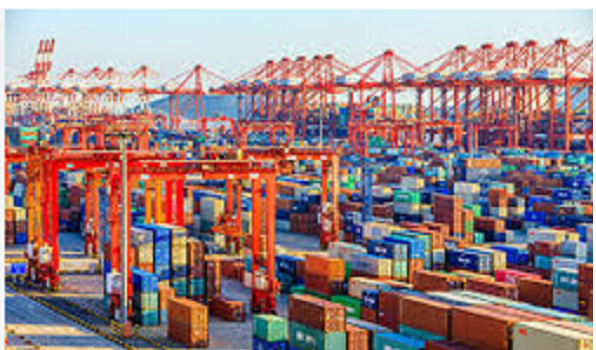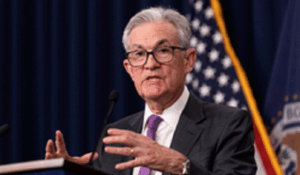Exports from Canada to other countries soar, but drop to U.S.
Canadian exports to the United States slumped in March but jumped to other countries, an early sign of how U.S. President Donald Trump’s trade war is upending supply chains and rewiring trading relationships.
In the first month that U.S. tariffs and Canadian countertariffs were in place, Canadian exports to the United States tumbled 6.6 per cent, compared with the previous month, while imports from that country dropped 2.9 per cent, Statistics Canada said Tuesday.
The drop in southbound trade was largely offset by a 24.8-per-cent jump in exports to other countries – the second-largest monthly increase for non-U.S. trade on record. This included higher shipments of crude oil to the Netherlands and Hong Kong, gold to Britain, and “various products” to Germany.
Monthly trade data are volatile, and the swings in March partly reflect idiosyncratic factors. Canadian companies had been rushing to get goods across the U.S. border in an effort to front-run tariffs, and that trend has begun to slow, leading to a month-over-month contraction in the export numbers.
Still, the jump in shipments to other countries in March does suggest there’s some room for Canada to diversify its markets away from the United States, said Nathan Janzen, assistant chief economist at Royal Bank of Canada.
“If you really wanted to, over time, significantly increase the share of trade going to non-U.S. trading partners, then you need to ship a lot more through ports, which probably requires some significant infrastructure investments for it to be sustainable,” Mr. Janzen said in an interview.
It’s not possible to replace the U.S. as a trading partner, he said. “But there is room at the margins, probably even with existing infrastructure, to ship more to non-U.S. partners,” he said, noting that cargo ships from Asia often leave Canadian ports with less than they brought over.
Canada‘s overall merchandise trade exports fell 0.2 per cent in March while imports were down 1.5 per cent, leaving Canada with a smaller-than-expected trade deficit of $506-million, compared with $1.4-billion in February. (A trade deficit occurs if imports exceed exports.) The decline in the value of trade was partly owing to lower prices; in volume terms, exports were up 1.8 per cent while imports were down 0.1 per cent.
The trade numbers landed the same day Prime Minister Mark Carney met with Mr. Trump in Washington to discuss the future of the commercial relationship between the two countries. No breakthroughs were announced in Canadian efforts to get Mr. Trump to lift tariffs that have been imposed on steel, aluminum and automobiles, as well as on goods that don‘t comply with the continental free-trade agreement’s rules of origin.
But the tone of the Oval Office meeting between Mr. Carney and Mr. Trump was congenial, and the pair committed to further negotiation. It was unclear whether Mr. Trump supported keeping the United States-Mexico-Canada Agreement. He said it was “a good deal for everybody” but he also said that he wasn’t sure “it’s necessary any more.”
Mr. Trump’s return to the White House with an ultraprotectionist trade agenda has upended global trade. Companies from around the world, including from Canada, have rushed to get products into the United States before tariff walls go up. That has caused the U.S. trade deficit – a major bugbear for Mr. Trump – to widen dramatically in recent months.
The latest U.S. trade numbers, also published Tuesday, showed a 14-per-cent month-to-month increase in the U.S. trade deficit in March to a record US$140.5-billion. Much of that increase was owing to a spike in imports of pharmaceutical products ahead of Mr. Trump’s threatened tariffs on pharmaceuticals and medicines.
Tariff front-running by Canadian companies appeared to slow in March, although the auto sector was a major exception. Carmakers continued to push vehicles across the border ahead of the 25-per-cent auto tariff that came into force in early April, leading to a 7.7-per-cent jump in vehicle and parts exports in March.
Meanwhile, industry-specific tariffs imposed in March are only just starting to bite. Exports of basic and semi-finished iron and steel products were down nine per cent that month, but exports of unwrought aluminum and aluminum alloys were up 4.4 per cent. Both are subject to a 25-per-cent tariff.
While the jump in Canadian exports to other countries looks promising, it’s unclear whether this is a one-off blip or the start of something more durable, economists cautioned.
“It is unlikely that exporters can continue to rely on other countries to offset weaker demand from the U.S.,” Stephen Brown, deputy chief North America economist at Capital Economics, wrote in a note to clients.
“The export orders index of the S&P Global Manufacturing PMI for Canada plunged to just 39.1 in April, the second-weakest reading on record after the April, 2020, trough during the COVID-19 lockdowns.”
Over the past month, Canada has largely avoided the escalation in Mr. Trump’s trade war with the rest of the world, and won some important carve-outs for Canadian goods.
Both Canada and Mexico were exempt from the 10-per-cent baseline tariff the U.S. applied to other trading partners. Likewise, auto parts from both countries that comply with USMCA rules of origin will continue to enter the U.S. tariff-free, while vehicle exports won’t face a tariff on the portion of the vehicle made up of U.S. car parts.
Even so, economists expect overall Canadian exports to take a hit in the coming quarters, especially if Mr. Trump’s global trade war causes an economic contraction at home.
“Once you get through the pattern of inventory building and then a pullback in trade in the very near term, the question really from Canada‘s perspective is how well does U.S. demand, and the U.S. economy more broadly, hold up in the face of significant tariff increases?” Mr. Janzen said.
This article was first reported by The Globe and Mail














